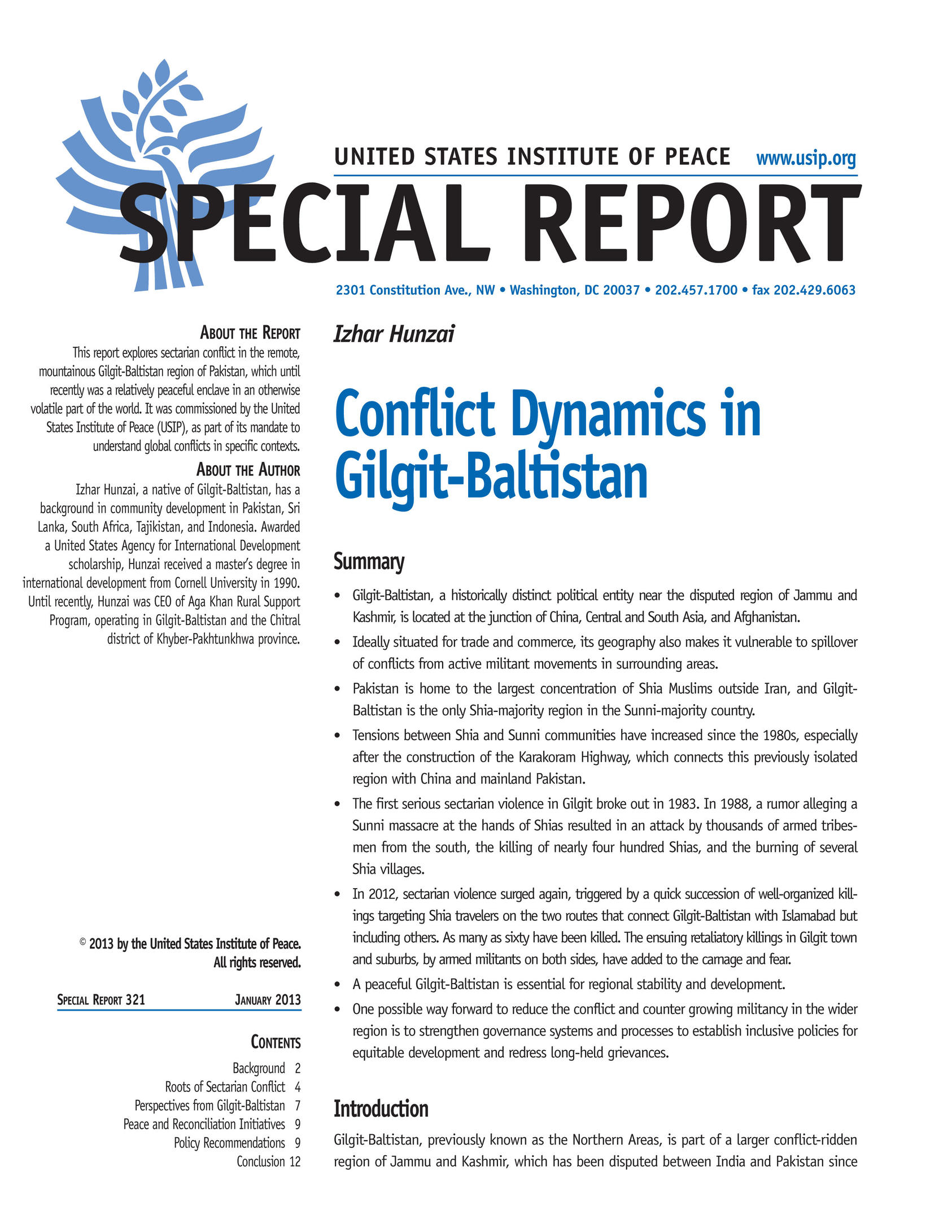Conflict Dynamics in Gilgit-Baltistan
In Northern Pakistan, the Gilgit-Baltistan region is experiencing growing sectarian violence but also is key to increasing regional trade ties. This report examines the root causes of the conflict and the means for its resolution.

Summary
- Gilgit-Baltistan, a historically distinct political entity near the disputed region of Jammu and Kashmir, is located at the junction of China, Central and South Asia, and Afghanistan.
- Ideally situated for trade and commerce, its geography also makes it vulnerable to spillover of conflicts from active militant movements in surrounding areas.
- Pakistan is home to the largest concentration of Shia Muslims outside Iran, and Gilgit-Baltistan is the only Shia-majority region in the Sunni-majority country.
- Tensions between Shia and Sunni communities have increased since the 1980s, especially after the construction of the Karakoram Highway, which connects this previously isolated region with China and mainland Pakistan.
- The first serious sectarian violence in Gilgit broke out in 1983. In 1988, a rumor alleging a Sunni massacre at the hands of Shias resulted in an attack by thousands of armed tribesmen from the south, the killing of nearly four hundred Shias, and the burning of several Shia villages.
- In 2012, sectarian violence surged again, triggered by a quick succession of well-organized killings targeting Shia travelers on the two routes that connect Gilgit-Baltistan with Islamabad but including others. As many as sixty have been killed. The ensuing retaliatory killings in Gilgit town and suburbs, by armed militants on both sides, have added to the carnage and fear.
- A peaceful Gilgit-Baltistan is essential for regional stability and development.
- One possible way forward to reduce the conflict and counter growing militancy in the wider region is to strengthen governance systems and processes to establish inclusive policies for equitable development and redress long-held grievances.
About the Report
This report explores sectarian conflict in the remote, mountainous Gilgit-Baltistan region of Pakistan, which until recently was a relatively peaceful enclave in an otherwise volatile part of the world. It was commissioned by the United States Institute of Peace (USIP), as part of its mandate to understand global conflicts in specific contexts.
About the Author
Izhar Hunzai, a native of Gilgit-Baltistan, has a background in community development in Pakistan, Sri Lanka, South Africa, Tajikistan, and Indonesia. Awarded a United States Agency for International Development scholarship, Hunzai received a master’s degree in international development from Cornell University in 1990. Until recently, Hunzai was CEO of Aga Khan Rural Support Program, operating in Gilgit-Baltistan and the Chitral district of Khyber-Pakhtunkhwa province.



